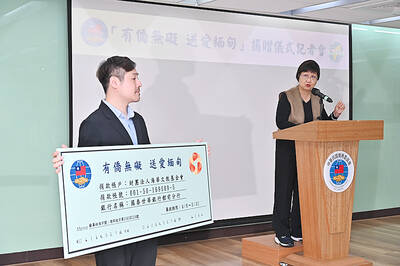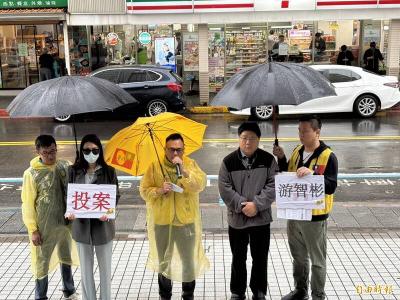A government official who has warned that the nation’s high-speed rail line could become inoperable in 10 years yesterday said the government had put forward a plan to resolve a land subsidence problem.
“Taiwan High Speed Rail can operate safely without hazards when the plan to close 1,000 deep wells in Changhua County and Yunlin County in 10 years is implemented thoroughly,” Public Construction Commission Minister Lee Hong-yuan (李鴻源) said.
Lee (who doubles as a minister without portfolio) called an intergovernmental meeting to finalize a plan to address the land subsidence problem, which is mainly attributed to overuse of underground water.
Under the plan, the government aims to reduce the amount of underground water pumped from wells that extend down more than 50m, known as deep wells, by 210 million tonnes by 2021, Lee said.
The section of the high-speed rail line that suffers the worst subsidence lies between Changhua County’s Sijhou Township (溪州) and Yunlin County’s Tuku Township (土庫), where the average subsidence was 6.4cm, data released by the Water Resources Agency last month showed.
Ground subsidence problems can be solved in 10 years with subsidence in the area decreasing to less than 3cm after the 1,000 deep wells are closed, Lee said.
Lee said agricultural irrigation would not be affected because it uses water that is mostly pumped from shallow wells.
Alternative water resources will partly come from the Hushan Reservoir (湖山水庫) in Yunlin County, whose water-holding capacity is about 50 million tonnes, and partly from water conservation measures that can assist industries to increase the water reuse ratio from 10 percent to between 50 percent and 60 percent, Lee said.

DEFENSE: The National Security Bureau promised to expand communication and intelligence cooperation with global partners and enhance its strategic analytical skills China has not only increased military exercises and “gray zone” tactics against Taiwan this year, but also continues to recruit military personnel for espionage, the National Security Bureau (NSB) said yesterday in a report to the Legislative Yuan. The bureau submitted the report ahead of NSB Director-General Tsai Ming-yen’s (蔡明彥) appearance before the Foreign and National Defense Committee today. Last year, the Chinese People’s Liberation Army (PLA) conducted “Joint Sword-2024A and B” military exercises targeting Taiwan and carried out 40 combat readiness patrols, the bureau said. In addition, Chinese military aircraft entered Taiwan’s airspace 3,070 times last year, up about

A magnitude 4.3 earthquake struck eastern Taiwan's Hualien County at 8:31am today, according to the Central Weather Administration (CWA). The epicenter of the temblor was located in Hualien County, about 70.3 kilometers south southwest of Hualien County Hall, at a depth of 23.2km, according to the administration. There were no immediate reports of damage resulting from the quake. The earthquake's intensity, which gauges the actual effect of a temblor, was highest in Taitung County, where it measured 3 on Taiwan's 7-tier intensity scale. The quake also measured an intensity of 2 in Hualien and Nantou counties, the CWA said.

The Overseas Community Affairs Council (OCAC) yesterday announced a fundraising campaign to support survivors of the magnitude 7.7 earthquake that struck Myanmar on March 28, with two prayer events scheduled in Taipei and Taichung later this week. “While initial rescue operations have concluded [in Myanmar], many survivors are now facing increasingly difficult living conditions,” OCAC Minister Hsu Chia-ching (徐佳青) told a news conference in Taipei. The fundraising campaign, which runs through May 31, is focused on supporting the reconstruction of damaged overseas compatriot schools, assisting students from Myanmar in Taiwan, and providing essential items, such as drinking water, food and medical supplies,

New Party Deputy Secretary-General You Chih-pin (游智彬) this morning went to the National Immigration Agency (NIA) to “turn himself in” after being notified that he had failed to provide proof of having renounced his Chinese household registration. He was one of more than 10,000 naturalized Taiwanese citizens from China who were informed by the NIA that their Taiwanese citizenship might be revoked if they fail to provide the proof in three months, people familiar with the matter said. You said he has proof that he had renounced his Chinese household registration and demanded the NIA provide proof that he still had Chinese